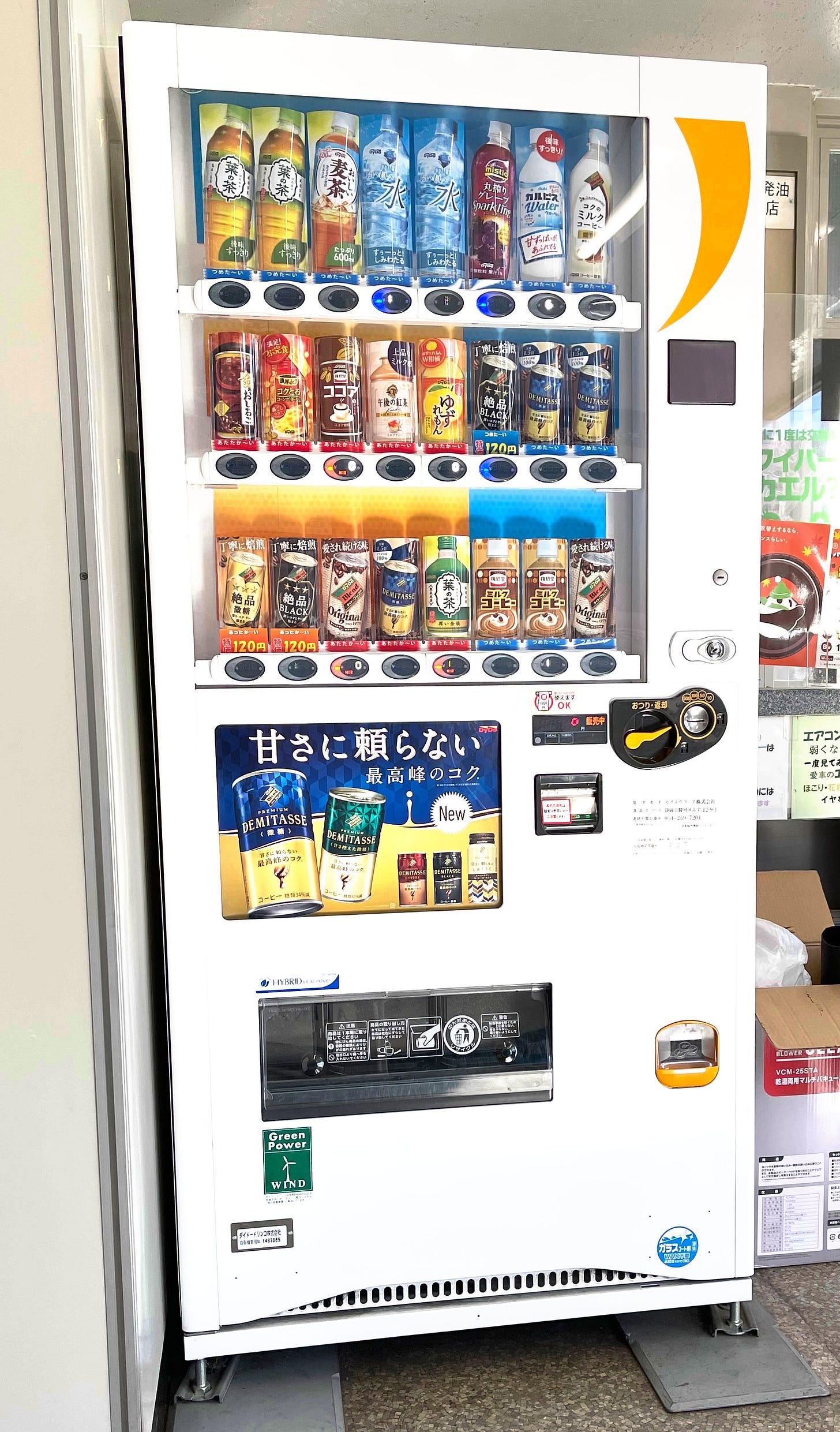I Filled Up My Car and Had it Washed
Is a "Green" Vending Machine Even Possible?
Here in Shizuoka City, after the new year’s shōgatsu (正月) holiday was over —four days when almost everything in Japan is closed—I drove to a gas station to fill up my car. A few blocks before I arrived, I watched with concern as an old woman slowly crossed the road. I was waiting for her to get to the other side of the street so I could turn. She held up her hand and bowed several times as she walked by as if to say, “I’m so very sorry. Please wait, won’t you? I’m walking as fast as I can.”
I felt like rolling down my window and saying, “Take all the time you like. I am not in a hurry.”
But I wasn’t the problem.
The problem was the width of the crossing and the timing of the lights at the intersection. They weren’t designed for an old woman with stiff joints and a painful back to cross the road at a comfortable pace. We have designed our roads and sidewalks for young people to travel quickly in huge, sharp-edged machines.
It is the way we humans have built our world.
What would our world look like if it were designed to serve the old and infirm, as well as children playing basketball? Would the pace be different? Would it sound different? Would it smell different?
I finally arrived at my gas station.
I think of it as my gas station because the staff are attentive and make me feel as if I have bestowed a tremendous favor on them by asking them to wash my car or fill it up with gas.
Japanese gas station staff often bow at their customers as they drive off, sometimes even doffing their caps.
Many years ago, I experienced a moment of culture shock when I watched the film Back to the Future in Japan and Canada, my homeland.
When the hero, Marty McFly (Michael J. Fox), travels back in time to 1955, he walks next to a gas station (spoiler alert—the link is a clip of the scene from the movie). A car pulls into the pumps, and four attendants rush out to serve the driver. One guy checks the pressure in the left front tire. Another opens the hood to check the car's vital signs. Yet another enthusiastically begins to wipe the front window. The fourth attendant fills the car with gas.
As this scene unfolded, the movie theater in Canada was silent for a moment, and then the audience broke out in laughter.
The film was released when self-service stations were becoming popular. People found the scene of overly attentive gas station attendants hilarious because it contrasted so strongly with the lack of service at gas stations when the movie was released.
In Japan, the audience didn’t laugh.
For the Japanese audience, the scene of the gas station with enthusiastic attendants was just a typical gas station.
Sitting in the gas station office waiting for my car to be filled, washed, and perhaps given a massage, I noticed a sign on the vending machine next to me.
Near the bottom of the machine, just below the dispensing door, there was a sign with an image of a windmill proclaiming that Daido, the drink company operating the vending machine, was doing its part to protect the environment.
The energy powering this machine apparently did not come from oil or coal burning in a stove but from a sleek, efficient windmill.
I pondered this, sipping the expensive can of coffee I had purchased from the machine while my car was being washed and filled with gasoline.
Recently, I finished reading How the World Really Works by Vaclav Smil. He makes it clear that we are not giving up fossil fuels anytime soon because we are so dependent on them.
Somebody harvested some coffee beans and put them in bags. Trucks probably shipped the bags to where the beans were ground and used to brew coffee. Then, somewhere else, large diesel-powered machines harvested ore from the ground. The ore was smelted into metal and eventually turned into cans. The brewed coffee was then put into the cans, packed into cartons, and trucked to this machine powered by a windmill somewhere far away where I couldn’t see it.
But I knew it was there because of the Green Power label on the vending machine.
I was glad that purchasing my can of coffee was good for the environment and proud to do my part to build a sustainable world.


Oh we do live in our little bubble stories as humans don't we? Poignant tale.